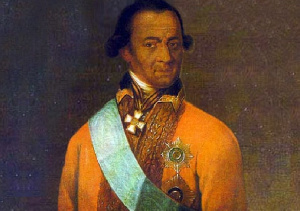Imperial Russia, one of the largest empires that thrived from 1720 to 1917, had only about a dozen permanent Black residents out of a population of over a million.
It has been documented that during this period, Russia “waged wars, conquered surrounding lands, and produced some of the most well-known, and highly feared, monarchs in modern history.”
Despite being a period that kept many in poverty, many Africans in the U.S., especially in the 18th and 19th centuries, saw a move to Russia as an opportunity for a better life, to escape the brutalities of American slavery.
Apart from the well-known Black person, Abram Hannibal, who lived in the 18th century and is famous because he was the ancestor of Russia’s great national writer Alexander Pushkin, many Black people who headed to Russia ended up working as Araps (potters or gatekeepers) at the Russian court.
Historians say that in the Russian Empire, Blacks were not enslaved. The ruling class met their labor needs through a system known as serfdom. Serfs, unlike slaves, owned property. With “no Black slaves” in Russia, the first Black people there performed an entirely different duty — “they were seen as an object of wonder, a curiosity and something exotic from overseas,” a report by Russia Beyond said.
There were Moors (described today as the Islamized, darker-skinned peoples who were considered alien to Europe) who were seen as objects of entertainment for many women in the royal family who spent most of their lives in their private quarters. There were also Moors to entertain the Tsars (the supreme male monarchs or kings) and these Moors were usually seen in lavish costumes.
Romanov Tsar Mikhail Fyodorovich, tsar of Russia from 1613 to 1645 and first ruler of the Romanov Dynasty, had servants who were Moors. They had arrived in Russia as elephant handlers at a time Russia used to get elephants as gifts from other rulers.
Though a few Moors learned to read and write, in the 1600s, they were still seen as sources of entertainment until Peter the Great, who ruled Russia as its emperor and first czar from 1682 to 1725, gave Moors the chance to advance in life. When Abram Gannibal or Abram Hannibal, the son of a minor prince or chief abducted from Cameroon and sold into slavery, was presented as a gift to serve as a servant of Peter the Great, he was raised in Peter the Great’s court as his godson.
Peter the Great allowed Abram to receive an education by learning to read and write. Abram was baptized and given the name Petrovich and worked as the King’s valet going with him on several personal and state missions. In 1716, when Abram was around 20, the King took him to Paris to study Mathematics and Engineering in a military school as demanded of royals, which he successfully completed two years later. At the age of 22, Abram was recruited into the French Army to fight in the war against Spain and returned to his home in the palace in 1723.
Although taken in by Peter the Great, Abram was not fully accepted by all in the royal house and in Russia as Blacks were only seen as being good enough as servants and slaves. Nevertheless, Abram went on to earn his title as a lieutenant in the Russian Army. He was promoted to the rank of full general by 1760 and would be celebrated as one of Russia’s most exceptional engineers having overseen the construction of several Russian fortresses and the Ladoga Canal. He married twice and had 11 children including Osip, who gave birth to Nadezhda, the mother of renowned Russian writer Alexander Pushkin.
By the time Abram died in 1781, a special court position had been created for the Moors known as ‘Moor of the Imperial Court’. This was established under Catherine II, the last reigning Empress Regnant of Russia. There were more than 20 Black servants or Moors who were also known as Araps at the court. They were mostly very tall with very dark skin and were obliged to be baptized into Christianity. Their court uniforms were also the most expensive among all the court servants and their salary was “quite large”.
In 1809 when John Quincy Adams arrived in St. Petersburg as the United States Minister to Russia, the first Black Americans appeared at the Imperial Court, according to the report by Russia Beyond. Among those first Black Americans was Nancy Prince, who followed her husband to Russia after he had taken a job with the Russian palace guard. Prince would later write about her experiences in Russia including the ceremonies she saw at the Imperial Court, the friendship she established with Russian empresses, and the 1825 Decembrist revolt she witnessed. The revolt, according to a report, “is one of the first indications of Russia’s road to becoming a communist state following the 1917 Russian Revolution.”
At the end of the day, Prince’s writings about how Russia tolerated Black people likely led Blacks in 19th century America to be more open to communist ideas, said Jessie Dunbar, a professor of English. Similarly, Abram’s and Alexander Pushkin’s fame in Russia also helped inspire Blacks to emigrate to Russia in the 1800s, Dunbar said.
As for the Moors, spending on them at the court was reduced at the start of the 1900s and their number was reduced to four. Today, in St. Petersburg, one can find the descendants of the Moors of the Imperial Court.
Source: face2faceafrica.com
 Home Of Ghana News Ghana News, Entertainment And More
Home Of Ghana News Ghana News, Entertainment And More





